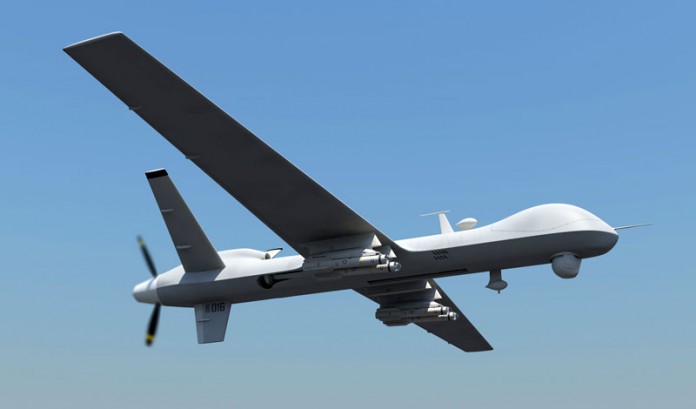MBDA has successfully demonstrated the operation of Dual Mode Seeker Brimstone (DMB) missile from an MQ-9 Reaper Remotely Piloted Aircraft (RPA), scoring nine direct hits against a range of targets including very high speed and manoeuvring vehicles. The main advantage of Brimstone is its dual-mode operating capability, combining millimetre guidance with semi-active laser targeting, enabling the operator to accurately designate a target, after the milimeter-wave seeker locks on the designated target the missile independently follows that target independent of further laser designation, through the engagement. The tests pave the way for the deployment of the weapon on Britain’s MQ-9 Reapers. Beyond their use with aerial platforms, Brimstones were also been tested on fast naval crafts, fired against speedboat simulating swarm attacks.

The trials began with captive carry of Avionics and Environmental Data Gathering Missiles, proving the successful integration of the two systems and gathering additional evidence to support future clearance activities. These were quickly followed by a series of live Operational Missile and inert Telemetry Missile firings. The firings were taken from realistic ‘middle of the envelope’ profiles; typically 20,000ft release altitude and 7km – 12km plan range, with the platform being remotely piloted in operationally representative beyond line of sight (SATCOM) conditions, with tracking and designation of targets being conducted in a mixture of manual-track and auto-track modes. Two of the more challenging scenarios were against trucks travelling at 70mph in a crossing target scenario. At times, the targets were manually tracked by the REAPER crews, showing how the integrated Semi-Active Laser and Active MMW radar seeker works in tandem to ensure direct hits, even while operators are tracking and designating targets manually over satellite communications. “Every Operational and Telemetry missile performed as designed” MBDA announced, “Following the successful demonstration Brimstone can now provide more flexibility to Reaper operators, reducing collateral damage risk while retaining first pass, single shot lethality against high speed manoeuvring targets on land, at sea and in complex environments.”

The original Brimstone missile used a milimeter-wave seeker to defeat massive armor formations in ‘fire and forget’ engagements. Royal Air Force (RAF) Tornado GR4 strike fighters were fitted to carry clusters of Brimstones, to kill multiple tanks in a simultaneous attack. DMSB, the new variant of the missile was optimised to engage asymmetric threats, by turning the fire-and-forget missile into high-precision weapon combining some ‘man in the loop’ capability, allowing the operator to designate the target for the missile, in case the MMW seeker couldn’t lock or was looking elsewhere. In an asymmetric engagement, ‘man in the loop’ function enables the operator to correct a missile that locks on the wrong target, divert the missile to an alternate target or order the missile to abort attack, hitting a pre-defined area, thus avoiding collateral damage. In addition to the dual-mode seeker capability, Brimstone fired from Tornado GR4 demonstrated the ability to engage, from a high off-boresight, targets travelling at up to 70mph. The targets were engaged from longer ranges, without the need to revert to straight and level flight, whilst operating in Close Air Support (CAS) role. These tests were carried out by the RAF in October 2013.
The use of MMW seeker enables the missile to effectively engage moving targets, a task that would require multiple Hellfire missiles. MBDA is employing a focussed, low fragmentation warhead optimised to defeat targets from Fast In-Shore Attack Craft Fast In-Shore Attack Crafts (FIAC) to fast moving armored or unarmored vehicles. In Libya, those characteristics reportedly made it one of the few weapons NATO commanders could use to hit enemy armored vehicles in urban areas.
MBDA is lobbying the USA to select the Dual Mode Brimstone missile to arm the Reaper drones operated by the US government, as an alternative to pursuing further investment in the Joint Air-Ground Missile (JAGM). This missile, developed by Lockheed Martin, was designed to replace Hellfires used by all US military services but is currently pursued only by the Army. It will also employ a dual-mode seeker combining the Hellfire laser seeker and Longbow MMW radar seekers in a similar way the utilised by the Brimstone.




















